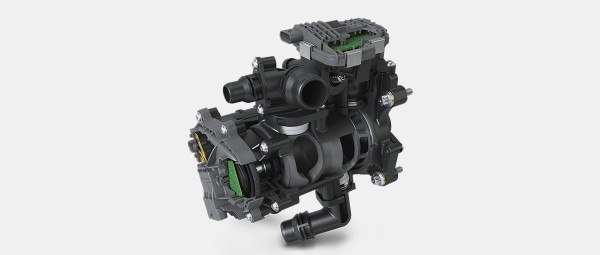Schaeffler is a pioneer in intelligent thermal management in vehicles
Thermal management is the unsung star of the show when it comes to making vehicles even more efficient and user-friendly. From electric drives and hybrids through to internal combustion engines: Schaeffler optimizes all types of drive systems using intelligent thermal management.
A feel-good temperature for the driver and vehicle
The air conditioning system always ensures a pleasant temperature in your vehicle – regardless of whether you are driving in deepest winter or on a hot summer day. Most drivers feel most comfortable at temperatures of slightly more than 20 degrees. But not only the passengers have their own individual feel-good temperature. The vehicle itself operates most efficiently within a very specific temperature range.
The engineering discipline of thermal management creates this “comfort zone” for the driver and vehicle. While the interior of the vehicle should ideally be maintained at the selected temperature, the vehicle has very different requirements. The internal combustion engine operates at temperatures of approximately 100 degrees. Modern downsizing engines with a high specific output, in particular, place high demands on the cooling circuit of a vehicle. At the same time, efficiency measures such as start/stop systems make it necessary to respond much more quickly to changes in the operating mode. This frequently means that heat sinks must be activated in less than a second. In order to accomplish this, Schaeffler’s thermal management system reacts to the energy quantities that are initially present based on the engine and vehicle operating modes and proactively sets the temperature accordingly. This measure alone leads to a reduction in CO2 of approximately 3.5 % in the NEDC
Complex requirements in hybrid vehicles
Electrification greatly increases the complexity of thermal management because additional components and cooling circuits, such as those for the battery and the electric motor, need to be integrated. This applies in particular to hybrid vehicles. In these vehicles, the internal combustion engine operates at a temperature of approximately 100 degrees while the battery of the electric motor has an operating temperature of between 15 and 30 degrees.
As a result, today’s hybrid vehicles often have a number of cooling circuits. Schaeffler therefore uses decentralized thermal management in the powertrain. Smart single valves (SSV) are coordinated via a central control system. The first generation of the SSV has been used in a new generation of three and four-cylinder gasoline engines from BMW since 2017. You can find out more about Schaeffler’s intelligent thermal management for hybrid powertrains here.

Thermal management increases the electric range

Thermal management also plays a significant role in all-electric vehicles such as e-cars because the temperature has a direct influence on the range of the vehicle. This is particularly noticeable in the winter. Here, the heating system consumes almost as much energy to produce a pleasant temperature in the interior as the vehicle requires for propulsion. The more efficiently the thermal management system can utilize the individual temperature levels present in an electric vehicle, the greater the range with one battery charge.
In road transport applications, thermal management is primarily responsible for a comfort function, can also generate a greater range and helps to increase efficiency and reduce CO2 emissions. In motorsport, the thermal management has another role: Here, it is mainly used for generating high outputs in motors and transmissions. An additional task is to resolve the conflict of objectives between air resistance and the requirement for cooling air and thus improve lap times. An efficient thermal management system can therefore be identified by seeing who crosses the finish line first.

